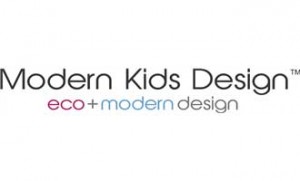
Could we be eating plastic? Plastic in Our Oceans
You may have heard about the ‘Great Pacific Garbage Patch’ a massive area of floating debris in the Pacific Ocean. This massive area of debris is located in a vortex or gyre in the Pacific Ocean. Gyres are part of the complex network of currents in the world’s oceans. They are large, swirling whirlpools created by wind and the rotation of the Earth. While a lot of attention has been given to the North Pacific Gyre, where the ‘Great Pacific Garbage Patch’ is, there are actually five of these massive gyres on Earth, and several smaller ones near Alaska and Antarctica. These swirling currents of water cause the pollution in the ocean to aggregate, threatening marine life.
Some effort has been taken to document the extent of the pollution in the North Pacific Gyre and the North Atlantic Gyre, and scientists are finding evidence of pollution in all five oceanic gyres. At Modern Kids Design, we were aware of the growing problem and wanted to do our part to help. When we learned about the 5 Gyres Institute, a nonprofit working to document and reduce pollution across all of the world’s oceans and waterways, we knew we found a new partner for our Shop for a Cause program.
The 5 Gyres Institute is dedicated to tracking plastic pollution through sailing expeditions of the five oceanic gyres, coordinating their efforts with scientists, sailors, and local communities. They are also reducing plastic pollution in the future by partnering with organizations and manufacturers. We’re really excited about their latest campaign, ‘Beat the Micro-Bead’, an effort to clean up some little pieces of plastic that are part of the big problem of pollution in oceans and waterways.
One of problems with plastic in our oceans is when the plastic enters the food stream. As plastic floats in water, natural movements and the sun break the plastic down into smaller particles. It’s these smaller particles that are ingested by marine life and it’s here that the pollution we create enters our own food supply through the aquatic food chain.
The problem is an order of magnitude worse for micro-plastics, which include micro-beads. Of particular concern are micro-beads, small pieces of plastic used as exfoliants in personal care products like face scrub and toothpaste. Micro-beads are most commonly found in cosmetics that advertise the ‘exfoliating properties’ of micro-beads. This form of plastic seems harmless but it’s not. Needless to say, there is no easy way to recycle them, they are designed to be washed down the drain and these tiny pieces of plastic quickly enter the food supply. 5 Gyres recognizes the only way to stop these micro-beads from entering our water and food supply is to stop manufacturers from using them in their products.
5 Gyres has teamed up in a global effort with Plastic Free Seas (Hong Kong) and The Plastic Soup Foundation (Netherlands) to eliminate micro-beads in consumer products. They are asking retailers to stop selling products with micro-beads, manufacturers to stop producing these products, and for consumers to check to make sure the product they are buying does not contain micro-beads.
The problem is a lot closer to home than we think. While the ‘ Great Pacific Garbage Patch’ lies halfway between California and Hawaii, in 2012, 5 Gyres found evidence of micro-beads in the Great Lakes right here in the heart of North America.
Please join us in supporting 5 Gyres in their effort to eliminate micro-beads. When you Shop for a Cause on Modern Kids Design and choose 5 Gyres as your cause, you can be part of the effort to ‘Beat the Micro-Bead’. Check out the pictures in the 5 Gyres section on our website too. As they say, a picture is worth a thousand words. You can also help by paying close attention when you are buying skin care and other products. For more adventurous types, 5 Gyres offers the option to support their cause by joining them on one of their expeditions. You can learn more and see an interactive map of information on the five oceanic gyres at the 5 Gyres Institute website. We’d love to hear your thoughts either by email or in the comments. Thanks for reading!




